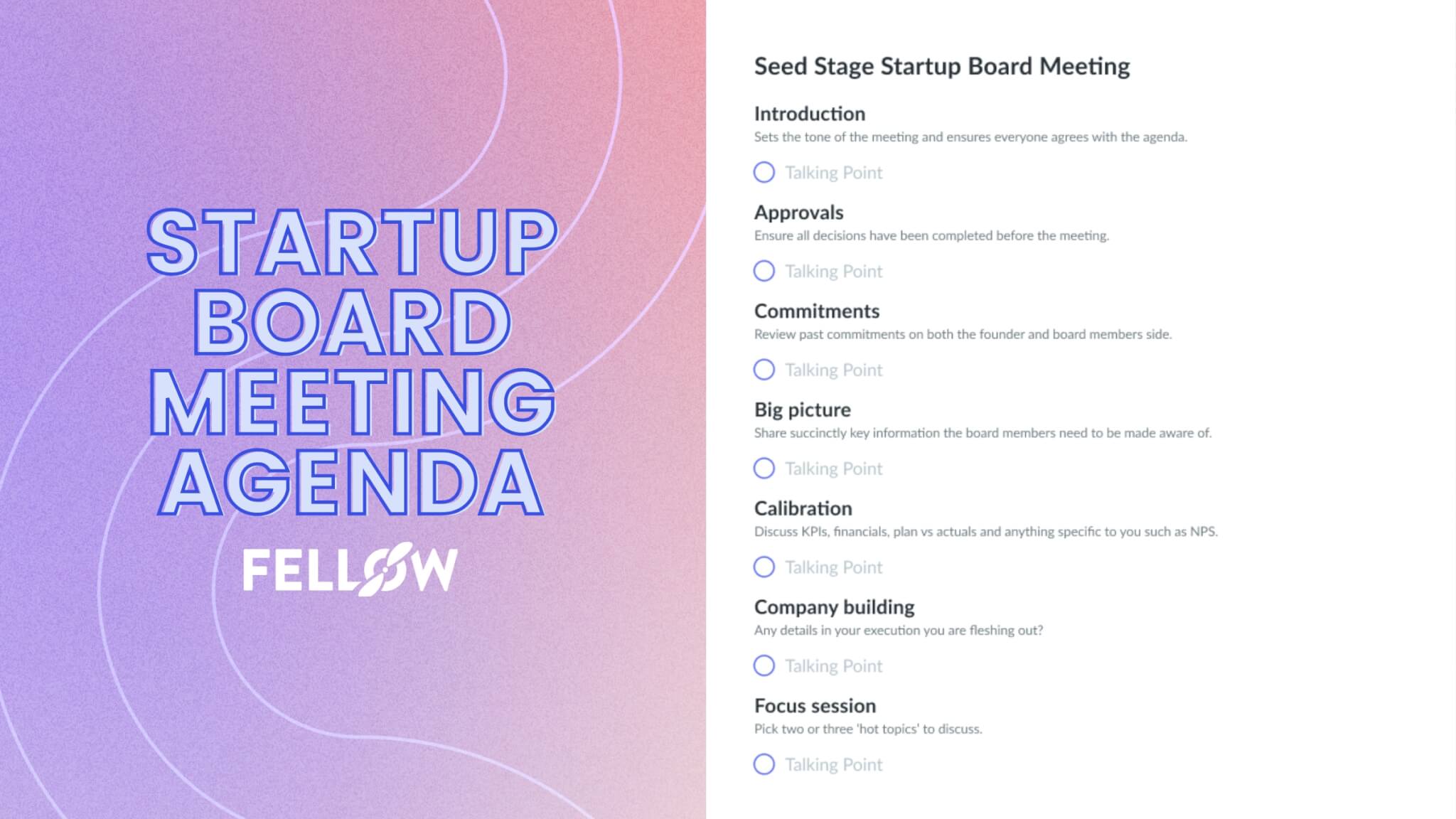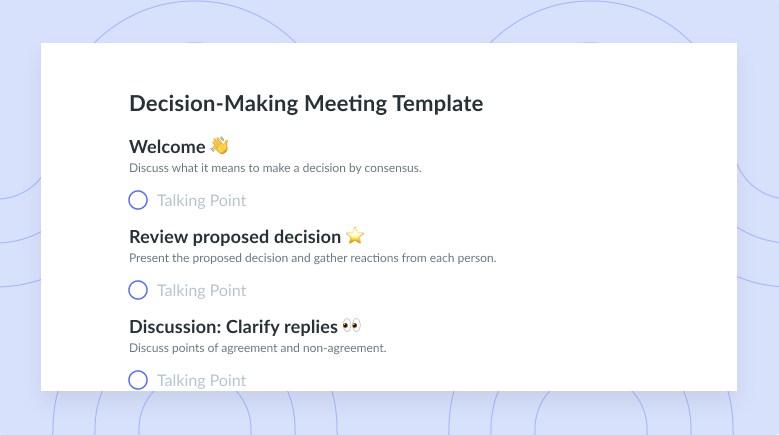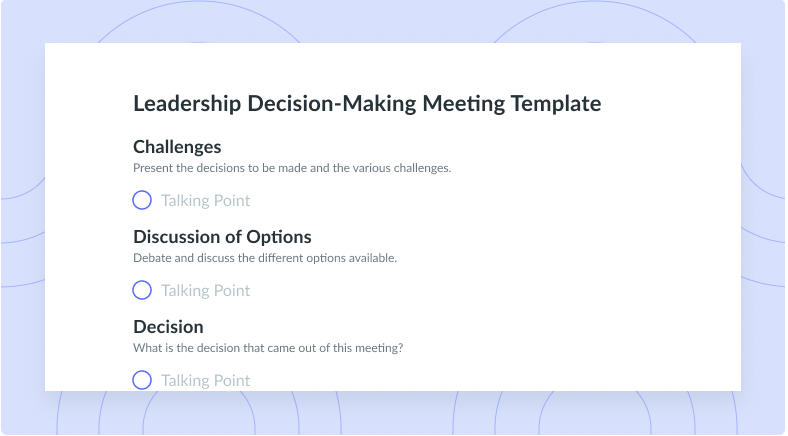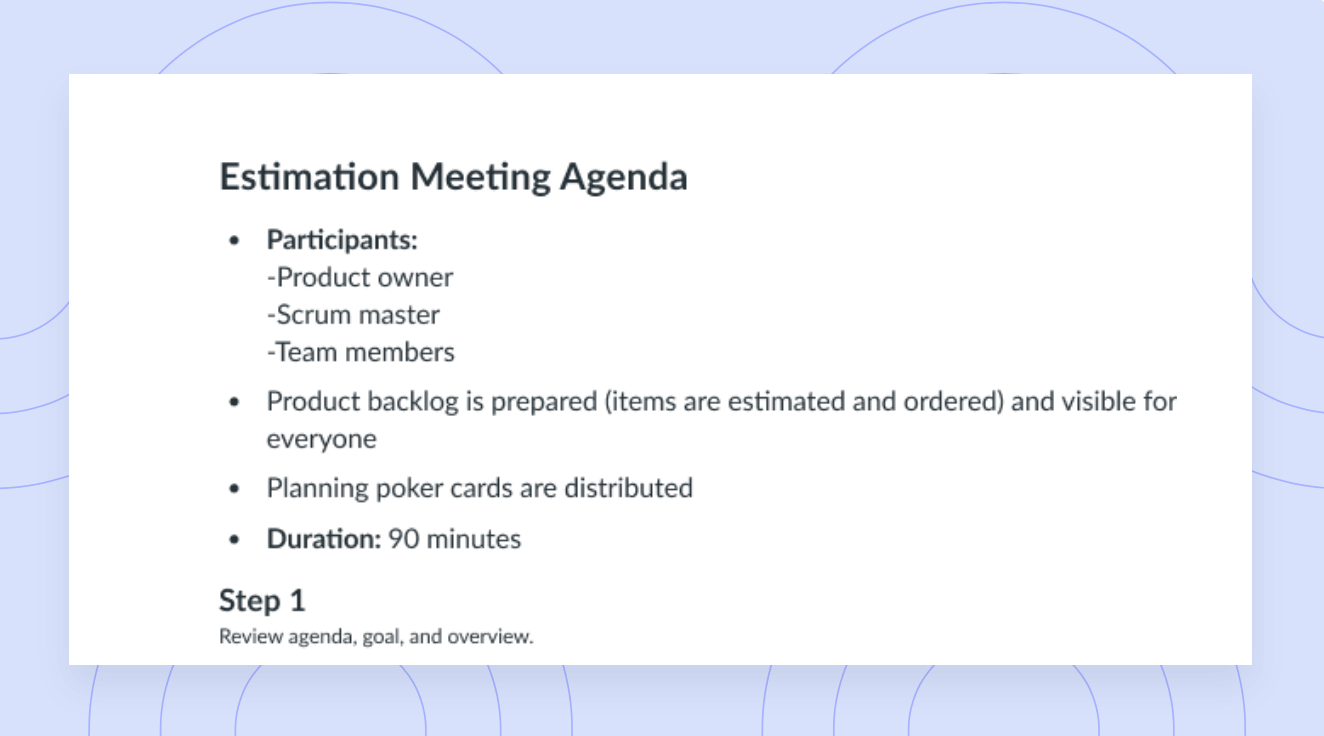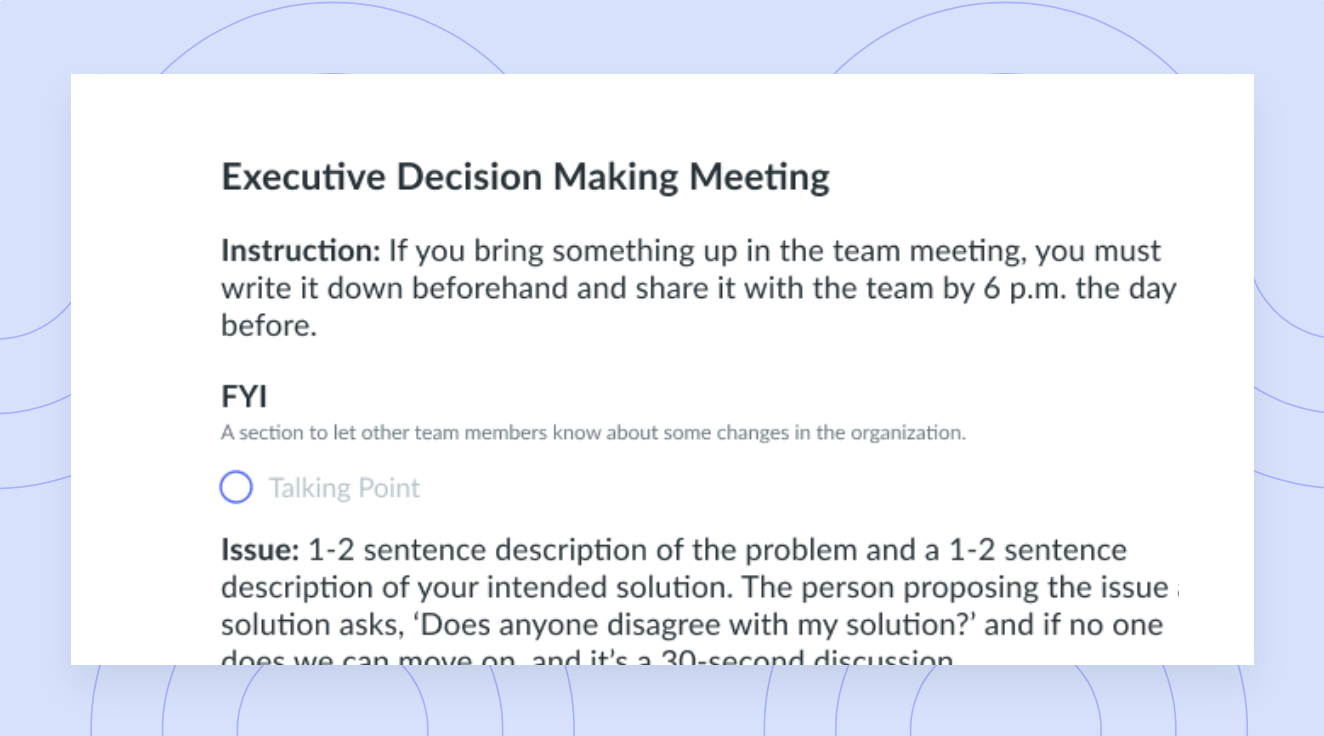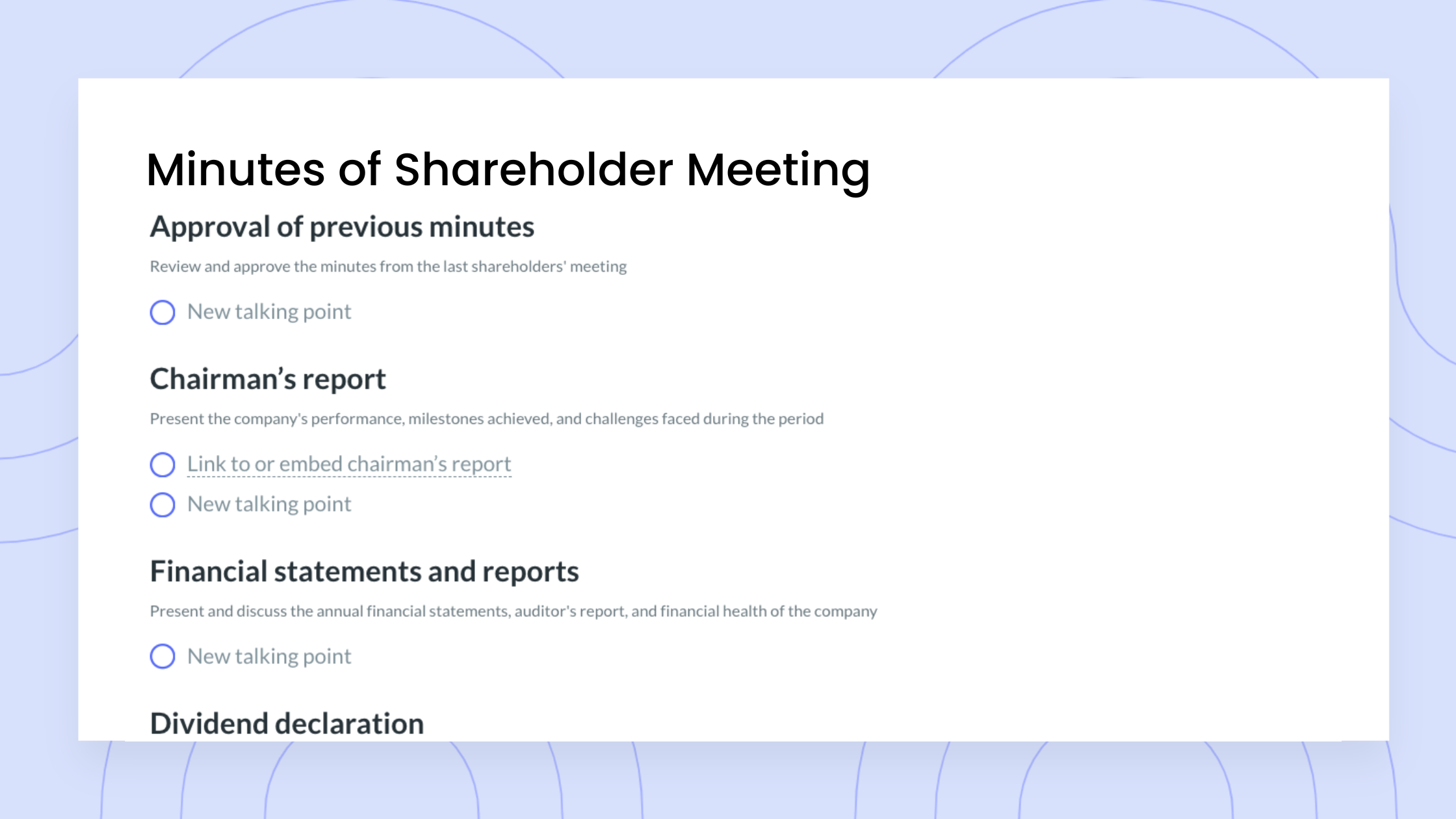Fist-to-Five Voting: How to Foster Efficient Decision-Making [+ Free Template]
Learn how to prioritize trust and transparency with the fist-to-five voting method. Plus, get a free template!
Are you gearing up for a big meeting during which you need to draw a consensus? You may be used to facilitating regular votes where meeting participants have the opportunity to simply agree or disagree. You may not have even considered an alternative when in reality, the fist-to-five voting method is much more effective and more inclusive. Unlike the traditional voting method, the fist-to-five method allows you to gain deeper insights so you can formulate a clear perspective on where people stand. In addition, this method is transparent and allows everyone to contribute and raise any objections they may have. Participants can agree or disagree and are welcome to rebut before the final decision has been made.
In this article, we’ll cover the principles of the fist-to-five voting method, in addition to step-by-step instructions for facilitating your fist vote.
- What is fist-to-five?
- Why should you use fist-to-five voting?
- How does fist-to-five voting work?
- How to use fist-to-five voting in remote and hybrid environments
- Examples of when to use fist-to-five voting
What is fist-to-five?
Fist-to-five voting is a method used by teams to draw a consensus. After a team has gathered all necessary info, the fist-to-five voting method can be used to poll everyone’s level of agreeance. Instead of voting point blank, everyone is able to give the facilitator a more in-depth understanding of how they feel by using this method. When using this voting method, you can measure the level of the participants’ agreement by counting how many fingers they have each raised. Let’s look at each voting level.
A fist: If someone raises a fist, they strongly disagree or in other words, they vote “no.”
1 finger: If someone raises one finger, the participant is neither in agreement with nor blocking the motion. In other words, they barely support the motion.
2 fingers: If someone raises two fingers, they aren’t a huge fan of the motion, but they will go along with it.
3 fingers: If someone raises three fingers, it means they are somewhat neutral. They are in the middle and will support the motion.
4 fingers: If someone raises four fingers, they are in support of the motion.
5 fingers: If someone raises five fingers, they fully support the motion. They think the motion is a great idea and couldn’t agree with it more.

Great meetings are just the start!
Level up your meeting habits to boost engagement and productivity with a collaborative meeting agenda. Try a tool like Fellow!

Why should you use fist-to-five voting?
fist-to-five voting offers a unique perspective, as it allows facilitators to gain a more in-depth understanding of how participants are feeling. Instead of moving forward with simply voting “yes” or “no,” participants can use the fist-to-five voting method to express more clearly how they feel. If they’re on the fence, barely in support, or extremely in favor of the motion, they’ll be able to make that known. This method will give the facilitator the opportunity to see who is excited, who may be on the fence, and who is very unhappy with the motion put forward.
Benefits of fist-to-five voting include, but are not limited to:
- Checking in on where people are with their thinking
- Voting efficiently and moving forward with consensus
How does fist-to-five voting work?
Here are five steps you should follow to conduct a fist-to-five vote.
- Discuss possible solutions or decisions
- Narrow down to one possible solution or decision to vote on
- Conduct the vote
- Give people an opportunity for rebuttals
- Come to a final decision
1Discuss possible solutions or decisions
Like any major decision, it’s important to thoroughly discuss the pros and cons of each outcome with everyone who’s involved in the decision-making process. Having these open and honest conversations upfront will ensure everyone is able to make an informed vote. If you fail to discuss possible solutions or decisions upfront, someone may ultimately vote in a way that doesn’t reflect their true feelings. It’s important that everyone is clear on any potential decisions or solutions before they cast their vote. It’s also equally important that everyone participates in this phase of the fist-to-five voting process.
2Narrow down to one possible solution or decision to vote on
This can be one of the most difficult parts of using the fist-to-five voting method. Before you can hold the final vote, you fist need to narrow your options down to one possible solution or decision that will ultimately be the focus of the vote. Giving everyone an equal opportunity to speak their minds on the voting topic will ensure everyone’s on the same page when it comes time to vote. As the facilitator, you’ll also be able to draw a general consensus of how everyone’s feeling before the vote takes place.
3Conduct the vote
Now that you’ve discussed possible solutions and decisions in addition to narrowing down what you’ll be voting on, it’s time to hold the vote! Before you hold the vote, it’s important to make sure that all participants are aware of how the fist-to-five voting method works. Inform them of what each signal means so they can be sure to use a signal that adequately reflects their position. After you’ve ensured that everyone is clear on the solution or decision they’re voting on in addition to understanding how the fist-to-five voting method works, you can hold your vote.
4Give people an opportunity for rebuttals
To make sure everyone feels heard and understood, it’s important that you give everyone the opportunity to make rebuttals. The beauty of holding votes is that voting gives everyone an equal opportunity to determine what the final outcome will be. Similarly, it’s equally as important that anyone who feels the need to rebut the decision can. Before the decision is set in stone, you can go around the room and host a conversation. Anyone who may have voted with a fist or a one may require further convincing. These individuals may want to gain a deeper understanding of the final outcome before agreeing to move forward.
5Come to a final decision
After you’ve hosted the fist-to-five vote and garnered your consensus, it’s time to come to a final decision. As stated above, you’ll want to make sure that anyone who wants to rebut the decision has the opportunity to do so before you come to the final decision. The fist-to-five voting method ensures that anyone with any concerns or objectives has the opportunity to feel heard. This method fosters transparency and inclusion and ensures the majority wins.
If the vote is widely split, it may be an indication that the discussion needs to proceed further before a final decision can be made. If views are primarily polarized, you’ll have to create a game plan in an attempt to get everyone on the same page.
How to use fist-to-five voting in remote and hybrid environments
Hosting a fist-to-five vote in person is seamless, but what you may have not considered is that it can also be done in a remote or hybrid setting. To host a fist-to-five voting session remotely, we suggest using a brainstorming meeting agenda where participants can add their signal asynchronously with emojis. Instead of reading visual cues, you’ll be able to simply tally up the votes by referencing the meeting agenda. We also suggest allocating a section of your meeting agenda to “voting” so everybody knows exactly where to add their votes.
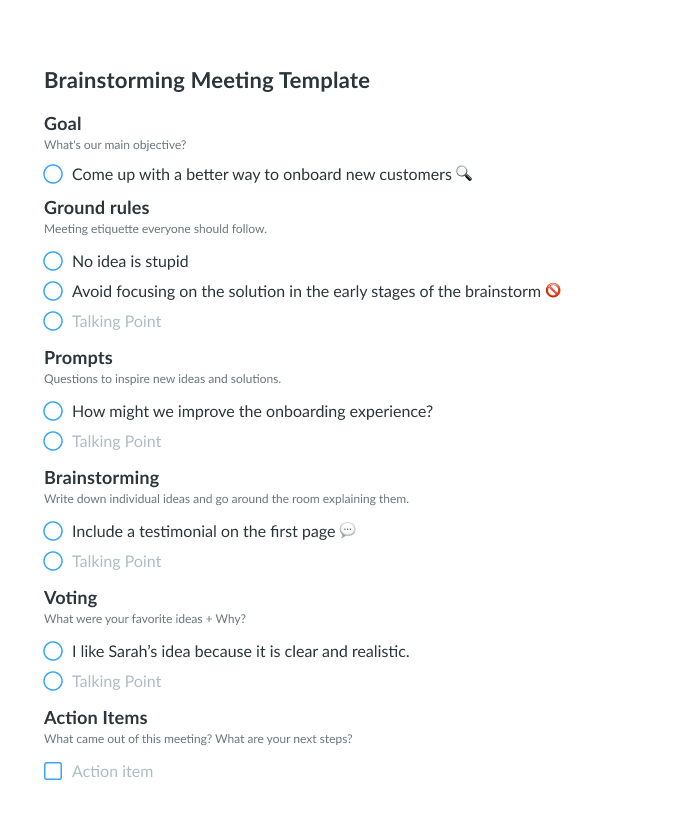
Examples of when to use fist-to-five voting
There are a variety of scenarios in which the fist-to-five voting method would be useful. Anytime a proposal has been brought forward, well discussed, and refined, a vote needs to be taken to come to the final consensus. The fist-to-five method can be used in any scenario where you wish to gather a consensus or quick feedback. Maybe you’re asking your team if they’re in favor of returning to the office? Or, maybe you’re attempting to gain feedback on the direction for a future project? This method can be used any time you need to hold a vote.
Foster trust and transparency with the fist-to-five voting method
Sometimes it can be difficult to make sure everyone’s concerns are heard, and it can be difficult to create an inclusive environment where everyone feels like their vote is valued. Luckily, the fist-to-five voting method combats this issue by honing in on inclusion and transparency. This method allows everyone to contribute equally and enables the facilitator to gain a deeper understanding of how everyone feels about the decision or proposed solution.
Next time you’re casting a vote or in need of a consensus, consider leveraging the fist-to-five voting method. These tips, tricks, and best practices will ensure you’re equipped with the knowledge you need to ensure your next vote runs swimmingly.

![Watershed Framework: Fostering Effective Decision Making [+ Free Templates]](https://fellow.app/wp-content/uploads/2022/07/Watershed-Framework-2.jpg)
![How to Win an Argument at Work [+ Free Template]](https://fellow.app/wp-content/uploads/2022/06/How-to-Win-an-Argument-at-Work-2.jpg)
![Productive OKR Weekly Check-ins [+ FREE Template]](https://fellow.app/wp-content/uploads/2022/05/OKR-Weekly-Check-in.jpg)
![How to Run a Delightful AGM [+ Free Template]](https://fellow.app/wp-content/uploads/2022/07/How-to-Run-a-Delightful-AGM-2.jpg)



